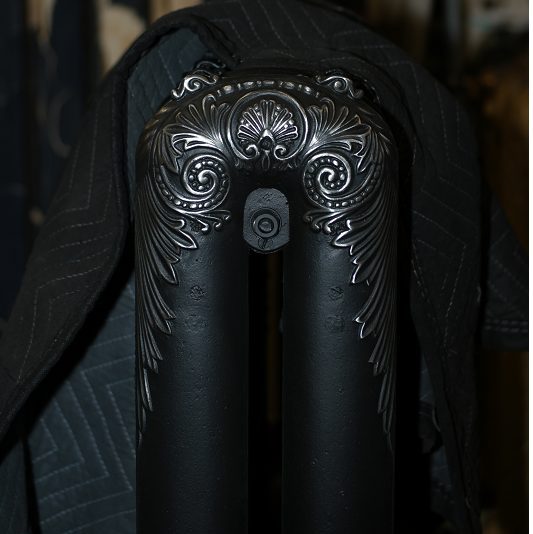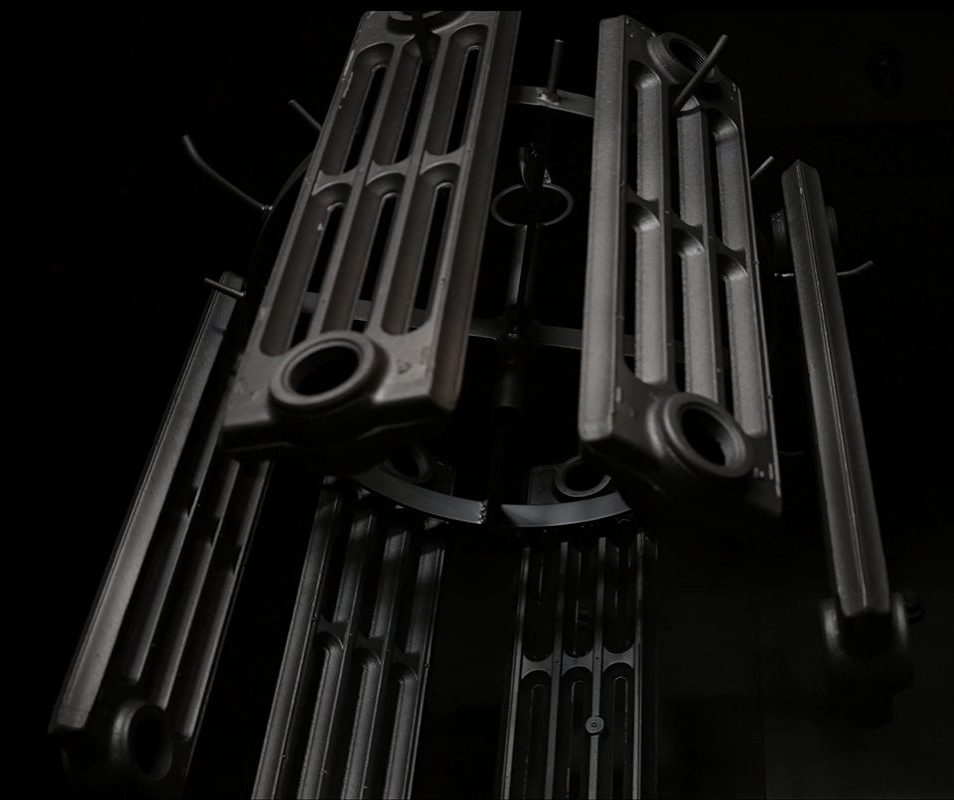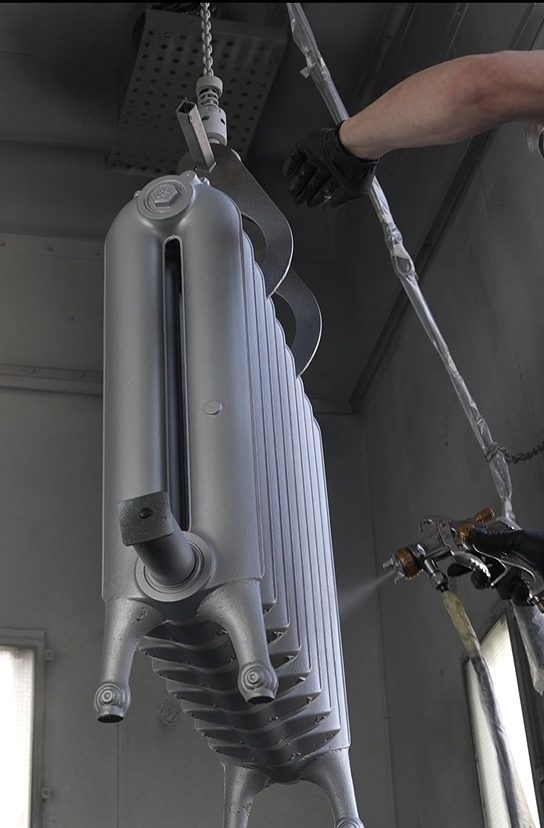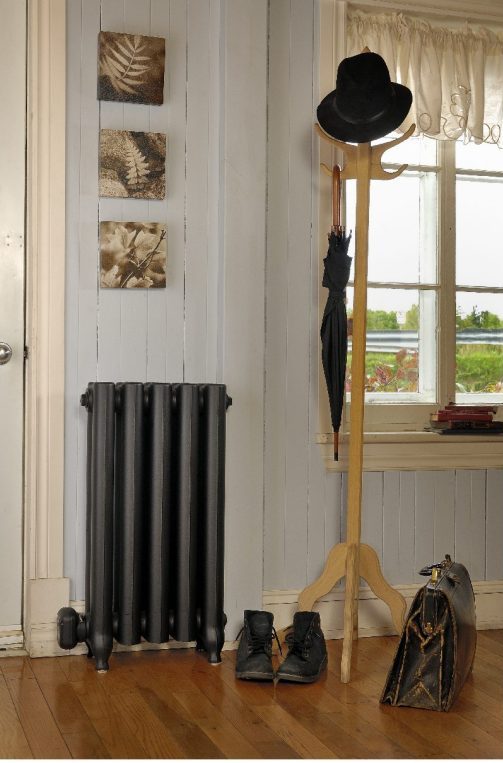
The timeless appeal of cast iron radiators has seen a resurgence in recent years. As the appreciation for vintage aesthetics combined with a growing green consciousness, has homeowners seeking out these marvelously efficient pieces of yesteryear. Whether you’ve just unearthed a treasure from a home renovation or have an heirloom in need of some TLC. The restoration process isn’t merely about refinishing a piece; it’s about giving new life to an essential part of your abode.
In our latest deep-dive into the world of vintage virtue, we’re unpacking the meticulous process behind restoring a cast iron radiator to its former glory. Because sometimes, reviving the old is about more than the aesthetic; it’s an act of environmental preservation and historical respect.
Unveiling True Beauty: Shot Peening vs. Traditional Stripping
Revitalizing vintage pieces goes beyond merely stripping away their worn exteriors. Over time, these items may have been layered with multiple coats of paint and varnish, hiding their true beauty. For a gentler option than traditional sandblasting, restoration experts often turn to shot peening. This method delicately cleanses the metal, revealing the cast iron’s distinct character without harming its patina. This is particularly vital for radiators in old buildings, where removing dangerous lead-based paint is essential. A shot peening chamber enables the safe collection and disposal of lead paint. Although it might seem like a mere aesthetic enhancement to the untrained eye, this step is crucial. It prepares the surface for renovation while preserving the metal’s structural integrity.
Disassembling with Delicacy
Many shy away from the intricate task of disassembling radiators into their components. Yet this remains the definitive approach for a thorough clean, both internally and externally. This method necessitates specific expertise and tools. More than just unscrewing bolts, this is a detailed procedure designed to thoroughly clean each part without damaging it. This precision allows the radiator to be reassembled impeccably, preserving both its performance and its aesthetics.
Internal Purification: The Inside Story
The intricate inner workings of a radiator reveal much about its age and usage, much like its exterior. Hidden within its complex structure are rust and sediment, markers of time and wear. Restoring a radiator offers the unique opportunity to cleanse not only the visible surfaces but also those hidden within its depths.
This endeavor extends beyond mere aesthetics. A radiator cleared of internal debris operates with greater efficiency. Sediment and build-up can obstruct water flow, impairing heat distribution. In an age where sustainability is crucial, ensuring a radiator functions at peak efficiency can incrementally reduce your environmental impact.

Crafting New Connections: Sealing the Future
One vital step that often gets overlooked is addressing the corrosion of joints and the loss of effectiveness in gaskets after decades of use. Due to the continuous pressure of heat cycles, gaskets lose their effectiveness, and joints become corroded. By machining new joints and installing new gaskets, the structural integrity and safe, leak-free operation of the radiator are assured for decades to come. This not only ensures the efficient flow of radiant heat throughout the system but also secures its operational reliability.
Putting the Pieces Back Together
Reassembly is akin to putting together a mechanical puzzle. Every component must fall back into place with the precision of a seasoned craftsman.It’s not a rushed process; rather, it’s a meticulous handling of parts that have been primed and aligned for a perfect fit.
This step requires not just an eye for detail, but also a commitment to ensure that every piece, every bolt is secured in a way that speaks to its history. And to the future it is poised to serve.
The Test of Time: Checking for Leaks
A newly restored radiator that leaks defeats its purpose of restoration. It’s imperative to conduct a comprehensive leak test to ensure that the radiator functions as it should. The leak test is the moment of truth—a final examination to determine whether the restoration is indeed complete. With painstaking care, the radiator is filled and pressurized, and with bated breath, the team watches for errant drips. If any damage is found, the affected sections are replaced, pinholes are mended, then it’s a return to the preceding steps until the process is flawless.
Optional Upgrades: Opting for Electric Conversion
Many homeowners are now leaning towards electric conversion for their cast iron radiators, and it’s not just about adding a modern twist. The primary appeal lies in eliminating the need for a central water or steam boiler, which not only reduces the risks of water damage but also cuts down on the costs of replacement, repairs, and maintenance. Additionally, electric conversions appeal to those who value the flexibility modern electric systems offer, including seamless integration with contemporary heat management systems.
In the case of electric conversion, radiators are filled with a mixture of water and recycled antifreeze. A low-density electrical element is then inserted, and the radiator is factory-sealed. This process ensures that each unit is rigorously tested and UL listed. This provides the perfect balance between maintaining the radiator’s traditional charm and meeting today’s heating needs.

The Master’s Brush: Painting with Purpose
The final step in external restoration, painting, marks a significant visual transformation. The choice of color is both personal and crucial. While some opt for historical accuracy, others prefer a bold, modern contrast. The true craftsmanship, however, is in the application.
For this process, acrylic enamel paint is what we recommended due to its more natural finish compared to powder coating. Which, due to its high heat application, can damage seals and potentially lead to future leaks. It’s essential to use industrial paint specifically formulated to withstand the heat cycles of cast iron radiators. Darker paint colors are more efficient because they have a higher emission factor, although any color is available to suit personal preference. All paints used are low in VOCs, ensuring environmental safety.
Painting isn’t just about aesthetics; it’s a protective measure. The paint protects the metal from oxidation, ensuring the restoration endures another century. It also signifies that the piece is not only completed but ready for service once again. It therefore embodies a blend of protection, beauty and functionality.
Inspection and Assurance
Before considering the restoration complete, a thorough inspection ensures that every aspect of the process has been executed to the highest standard. This is the time to catch any oversight, any blemish, any detail that does not meet the stringent criteria. It’s a final step that radiates the commitment to quality.
The inspection is a mirror, reflecting the standards of the craftspeople who have dedicated hours, days, weeks, perhaps even months, to bring out the best in the cast iron.
Packaging and Shipping: Rediscovered Gems
The true reward for restoring a cast iron radiator comes when it’s installed in a new home, emitting warmth and history. Packaging and shipping are crucial, building trust between the restoration team and the homeowner while ensuring the radiator’s safe transport to its new role as a centerpiece.
Ultimately, restoring a cast iron radiator is more than a refurbishment; it’s a celebration of heritage, craftsmanship, timeless beauty, and environmental stewardship. Each restoration tells the story of the home it will heat and the legacy it will carry forward.
This is an homage to the vintage and valorous, acknowledging the profound impact of these significant yet understated objects. The restoration process, though unseen, leaves a lasting legacy that spans generations.

